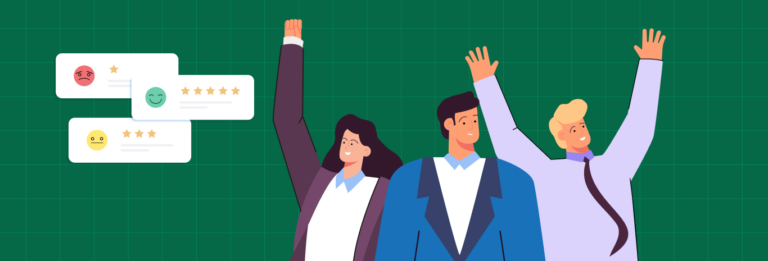There’s no denying that employees are the biggest asset for your company. It’s no longer about making the best hire but about how you keep them engaged in their roles and driven towards accomplishing bigger things within the organization. And that’s where employee experience comes in.
Owing to the pandemic, there has been a significant shift in the work culture across the globe. With more distributed teams and lack of physical interaction, organizations are finding it harder to ensure a good employee experience.
In this blog, we’re sharing the insights we found while conducting a survey for our State of Employee Onboarding Report. Read on to know some of the challenges that organizations will face and how to navigate them.
Enhancing employee engagement
As per a Forrester research, companies with phenomenal employee experiences have seen motivated employees who do their best work resulting in:
- 4.3x increase in earning per share
- 81% higher customer satisfaction
- 17% higher productivity
- 21% higher profitability
However, keeping employees thoroughly engaged with a company’s goals can be tough in a distributed work setup. The ability to communicate the vision, mission and goals of the organization consistently and create a culture of teamwork is even more challenging when employees can’t meet each other and only interact virtually.
This is where HR teams will need to put employee engagement at the forefront of their employee experience strategy. Be it incorporating small activities that bring the team together, or understanding the distractions or concerns that may be facing, employee engagement surveys using AI will become the HR department’s new best friend. The automated surveys and actionable insights derived from these surveys will help HR personnel identify unhappy employees, analyze trends, employee pulse monitoring, identify engagement drivers, and eventually help them take a more strategic approach to ensuring a better employee experience in 2024.
Managing employee lifecycles
Transparency and visibility across the employee lifecycle are necessary. Continuous feedback and research at every checkpoint is essential to ensure better employee experience.
With a distributed workforce, it is getting harder for HR teams and leadership managers to pay attention to the employee lifecycle. Especially when you consider what may appeal to a new hire, might not be half as enticing to someone who has been working with you for over a year.
Every employee’s journey with your organization is different, and it’s important to personalize the experience you deliver to ensure lower employee turnover. The best way to address this challenge is to use employee insights. But to be able to gather insights in a timely manner, across the entire employee lifecycle, HRs will need to automate employee engagement surveys.
For example, if a new hire just got onboarded, the employee engagement survey will focus on learning from their experience. On the other hand, if someone recently celebrated their work anniversary, a survey can be conducted to understand what keeps them motivated and what their expectations from work look like going forward.
With AI in HR, it will also become simpler for organizations to derive actionable insights from these surveys and to make these insights a part of the employee onboarding strategy.
Comprehensive performance analysis
Performance analysis being such a rich asset, remains one of the challenges for Human Resource Business Partners (HRBPs). Most organizations misunderstand performance analysis as a mere assessment tool, whereas it is a development handbook that aids with promotions, planning, and succession processes.
A well-crafted strategy and performance analysis can help employees and managers gather a lot of qualitative data for multi-rater assessment and 360-degree feedback. In order to ensure proper performance analysis organizations need to create a feedback culture wherein one can ask peers alongside managers to review each other’s performance. But before that, you’re going to have to create a safe space for your employees to share their opinions.
Another way to ensure effective and efficient performance analysis at regular intervals is to leverage automation. Performance management and analysis tools now equip HR teams with a 360-degree view of an employee’s journey within the organization, team and individual level. It benchmarks their work alongside a set number of parameters and helps gauge success that can be acknowledged in a timely manner.
Understanding employee satisfaction
To balance the employee experience equation, organizations need to look into two variables – benefits and rewards. But as an organization grows, the definition of a good benefit or reward changes and the perspective of each employee towards them sees a shift as well.
For instance, office transport was a common perk offered by most organizations before the pandemic. But once the lockdowns occurred, the perk soon turned obsolete for most, leaving the employees feeling empty handed.
In such cases, some organizations were quick to adapt and change their perks to remote work setup allowances. The shift instantly created a positive impression on their employees, boosting their satisfaction levels of working with the organization. But how does one gauge continuously changing employee expectations? Well, when one on one conversations get tougher to conduct, employee engagement surveys come into play. Employee engagement software using AI comes with robust automations that help you set up surveys to monitor the employee satisfaction levels periodically, analyze their sentiments and learn from their responses faster. This in turn helps you put together benefits, rewards and processes that your employees truly want.
Document management will get tougher
The pandemic has nudged most of us into working from home or adopting hybrid work cultures. While that’s good news for the talent pool HRs are able to bring together, a distributed workforce comes with its own challenges and managing documents is one of the biggest ones.
HRs can no longer walk up to desks, requesting or following up with employees to complete the paperwork. And, having to do these follow ups virtually is quite tedious, overwhelming, and definitely prone to human error.
This is where AI in HR will come in to solve document management by automating the collection, categorization and organization of employee records across all stages of the employee journey. It will also make it easier for both employees and HRs to manage or update their documentation in the organization records.
Efficient case management
One of the most significant roles of HR is to resolve issues and address concerns of employees. This is typically referred to as case management, and includes things like queries or requests around maternity leave, sick leave and other similar policies.
But as teams scale, managing these cases proactively and in a timely manner becomes challenging for HR teams. This results in delayed address of issues, concerns and queries, leading to employee anxiety and assumptions that lead to a negative experience.
In physical offices, employees could walk up to the HR department to seek a swift response. But now they need to email or message them, and then await a response. In sensitive cases such as maternity leave, the back and forth of communication is not appreciated on both sides.
This is where establishing a centralized help desk with the help of an employee experience software comes in handy. Using AI in HR enables organizations to automate responses to repetitive cases, improving the resolution time dramatically and letting HR professionals focus more on cases that require one on one communication with employees. Also, centralizing employee cases helps you get a holistic view of the experience you’re able to deliver and learn from the same.
Keeping employees motivated and productive
Work from home is peaceful but not so productive on all days as it comes with endless distractions. Unlike an in-office scenario, it’s harder to identify employees who are not their productive best or even understand the reason behind the same. Infact, 82% of remote employee managers are concerned about reduced productivity.
To minimize this, organizations will need to invest in smart project management tools and communication tools for their teams. The idea is to help them organize their day to day sprints and plan out their work in a strategic way, whilst proactively communicating with their team.
Simply put, if you want to continually improve or keep up the productivity levels of your employees, you need to replicate the enthusiasm of a physical workspace, virtually.
A smart way to identify productivity barriers is to conduct frequent surveys with the help of AI in HR. You can set up chatbots to frequently touch base with your employees and survey them about different aspects of work.
Ensuring a good employee experience does not happen overnight. It’s a continual process that you need to learn from and get better at with time.
Ready to take the first step towards simplifying employee experience? Book time with our experts to know how you can do it.






